September 2018
By Sarah Shirazyan
The threat that terrorists could obtain and use nuclear or radiological material prompted a set of innovative counterproliferation strategies in the years since the September 11 attacks and the revelation of the Abdul Qadeer Khan nuclear smuggling network.
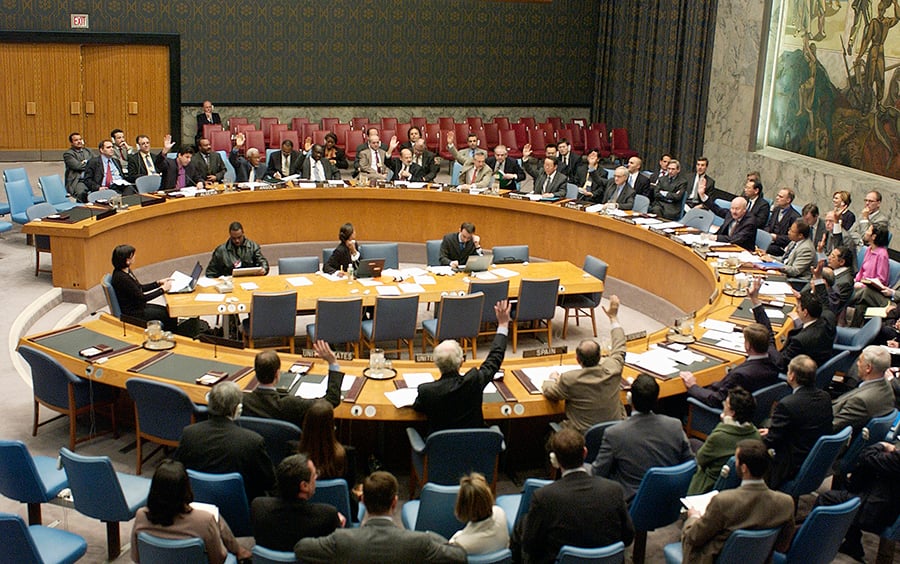 One important yet underappreciated element has been to augment broad, international counterproliferation strategies with buy-in from regional organizations, such as the Caribbean Community (CARICOM), the Organization for Security and Co-operation in Europe (OSCE), and the African Union (AU). Tapping into the strengths and resources of regional organizations could bolster the implementation of global counterproliferation strategies. On this, more can and should be done.
One important yet underappreciated element has been to augment broad, international counterproliferation strategies with buy-in from regional organizations, such as the Caribbean Community (CARICOM), the Organization for Security and Co-operation in Europe (OSCE), and the African Union (AU). Tapping into the strengths and resources of regional organizations could bolster the implementation of global counterproliferation strategies. On this, more can and should be done.
A web of international programs aims to reduce the risk of nonstate actors accessing and trafficking in weapons of mass destruction (WMD) materials, to counter terrorism financing, and to strengthen global nuclear security architecture. The effort includes mechanisms such as the Proliferation Security Initiative, the Container Security Initiative, the Global Initiative to Combat Nuclear Terrorism, the Second Line of Defense, the International Convention for the Suppression of Acts of Nuclear Terrorism, the nuclear security summits, the Global Partnership Against the Spread of Weapons and Materials of Mass Destruction, and UN Security Council Resolutions 1373 and 1540.
These initiatives represent the international community’s efforts to set up a more robust transnational legal infrastructure to respond to the threat of WMD terrorism. Some involve formal organizations while others are voluntary regimes without any formal bureaucracy. Some are legally binding, and others rely on the existing national or international law to conduct counterproliferation activities, such as interdiction on international waters or in international airspace.
Of these efforts, UN Security Council Resolution 1540, enacted in 2004, is the most far-reaching international instrument of this post-September 11 nonproliferation infrastructure. The resolution, which affirmed that WMD proliferation is a threat to international peace and security, obligates all states to adopt and enforce three broad sets of effective domestic regulations to keep such weapons and related materials out of the hands of nonstate actors.
First, the resolution condemns and outlaws any type of state-sponsored WMD proliferation. States shall refrain from taking any steps that could support nonstate actors in acquiring, using, and transferring nuclear, chemical, and biological weapons and their delivery systems.1 Second, the resolution calls for criminalization of proliferation-related activities. States are required to adopt effective domestic controls and enforcement mechanisms over WMD materials and criminalize possession, manufacturing, acquisition, development, transportation, transfer, financing, and use of such materials.2 Third, the resolution requires states to address the illicit trafficking of WMD materials by establishing and enforcing controls related to accounting and securing; physical protection; border and law enforcement, including combating illicit trafficking and brokering; and export, transit, and transshipment.3
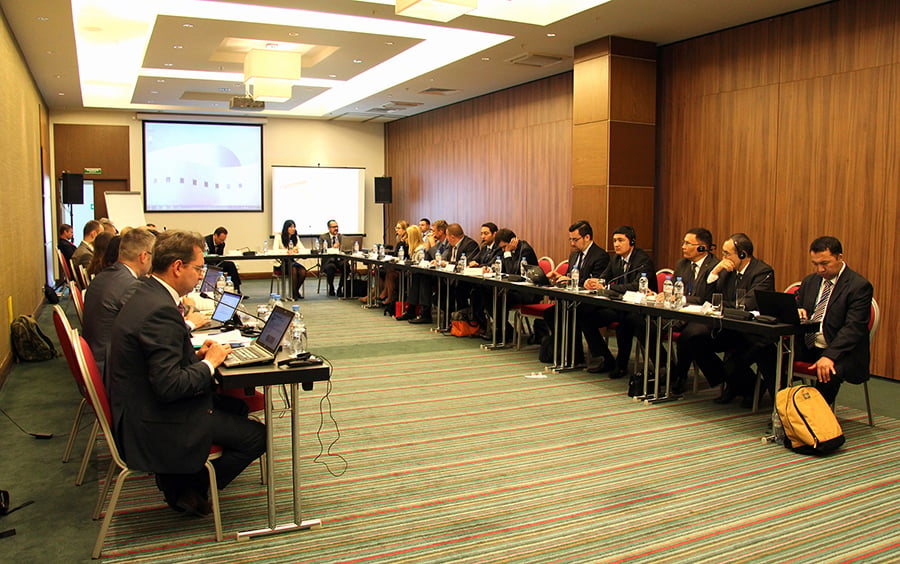 Resolution 1540 broke new ground in the global nonproliferation regime by its scope and legally binding nature. Enacted under the binding powers of UN Charter Chapter VII,4 it was designed to address the gaps in existing nonproliferation architecture. As such, it provides a consolidated approach to deal with all three types of WMD materials and all aspects of weapons proliferation, including but not limited to dual-use materials and technology and delivery means, as well as export-import regimes and physical security.
Resolution 1540 broke new ground in the global nonproliferation regime by its scope and legally binding nature. Enacted under the binding powers of UN Charter Chapter VII,4 it was designed to address the gaps in existing nonproliferation architecture. As such, it provides a consolidated approach to deal with all three types of WMD materials and all aspects of weapons proliferation, including but not limited to dual-use materials and technology and delivery means, as well as export-import regimes and physical security.
Many pre-existing multilateral arms control treaties and export-import regimes already contained some obligations comparable to those in the resolution.5 Despite the overlap, these legal instruments, unlike Resolution 1540, were neither universally binding nor targeted to nonstate actor proliferation. The resolution integrated a range of WMD obligations in one parcel and made these obligations mandatory for all UN member states.
To oversee member state compliance, the Security Council introduced a mandatory national reporting mechanism for states and created an institutional framework to monitor this process. States must submit a national report about the domestic measures they have taken or intend to take to meet their obligations under the resolution. To facilitate and examine countries’ domestic implementation, the Security Council formed a subsidiary body—the 1540 Committee.6 The committee’s work is further supported through a group of governmental independent experts and the UN Secretariat. On the secretariat side, the UN Office for Disarmament Affairs (UNODA) provides material and logistical support to the committee.
From the outset, the drafters of the resolution acknowledged the role regional organizations could play in promoting domestic implementation. Resolution 1540’s preamble explicitly recognizes the need to enhance coordination on regional levels to intensify efforts in the fight against proliferation activities by nonstate actors.7 That is why the UNODA and the 1540 Committee have long sought engagement with regional and subregional organizations through planned and ad hoc initiatives.
Because the United Nations lacks the necessary resources to carry out the ambitious mandate of Resolution 1540, successful implementation requires maximizing the strengths and resources of different actors involved in the process. The pooling of resources is often referenced as “synergies of strengths.”
What are the opportunities and challenges such synergies may create? In thinking about expanding Resolution 1540’s global architecture, what broader conclusions can be drawn from the existing regional cooperation mechanisms based on Resolution 1540?
International Peace and Security
Strategies to involve regional organizations8 in security-related topics, including in the maintenance of international peace more broadly, have frequently appeared in UN work.9 Article 52 of the UN Charter explicitly recognizes the existence of regional arrangements or agencies in addressing issues related to the maintenance of international peace and security. In doing so, the activities of regional arrangements must be consistent with the purposes and principles of the UN and its charter.10 Moreover, Article 53 gives the Security Council a mandate to use regional arrangements for enforcement action.11
The end of the Cold War enhanced the role and prospects of regional organizations to address peace and security issues.12 The UN started to seek avenues for task sharing and cooperation with regional organizations amid a growing number of security challenges.13 In his 1992 report titled “Agenda for Peace,” UN Secretary-General Boutros Boutros-Ghali referred to burden sharing between the UN and regional organizations, which not only lightens the workload of the Security Council but also creates a deeper sense of participation in international affairs for many states.14 Over more than two decades, UN leaders have continued to raise the profile of regional organizations and sought their assistance in combating a diverse set of security dilemmas.15
With respect to countering nonstate-actor WMD proliferation, then-UN Secretary-General Kofi Annan expressed a conviction in 2006 that interactions between the world body and regional organizations could strengthen states’ domestic capacity to implement obligations under Resolution 1540.
Security Council’s Commitment
Over the years, the Security Council has pressed for more purposeful integration between the 1540 Committee and regional organizations. All follow-up resolutions include language promoting the role of regional organizations.16
For example, Resolution 1673, adopted in 2006, invites the committee to partner with regional organizations in exploring ways to exchange information about experiences and lessons learned and to identify programs that could potentially facilitate the implementation of Resolution 1540.17 Resolution 1810, adopted in 2008, further testifies to the council’s pledge to advance the role of regional organizations.18 The 1540 Committee’s 2009 annual review outcome document emphasized fostering interaction between regional and national agencies to help overcome domestic implementation challenges, such as reconciling competing security priorities; to assist with advisory services, such as helping countries draft domestic rules and regulations; and to match assistance requests with donors.19
Resolution 1977, adopted in 2011, contained even more explicit language on the relevance of regional organizations. In order to improve regional cooperation and information sharing, the council urged relevant organizations to designate a point of contact for matters related to Resolution 1540.20 For the first time, resolution language formally endorsed UNODA activities in support of regional implementation approaches.21 Resolution 2325, adopted in 2016, enhanced the focus of Resolution 1540 on regional strategies by asking regional organizations to incorporate Resolution 1540 obligations in their respective mandates and model legislation.22
Opportunities and Challenges
What strategic opportunities does regional engagement present, and why is it a smart policy choice to work through regional organizations? Certain characteristics of regional arrangements23 explain the importance of creating synergies. Specifically, regional organizations enjoy a higher degree of political legitimacy among their member states, may complement multilateral efforts through local knowledge, and can clarify ambitious international mandates and norms to their member states.
Regional organizations derive legitimacy from their member states’ voluntary decision to join these arrangements. States’ decision to join regional organizations are largely driven by a set of shared interests and histories. There is an inherent belief that collective regional efforts enhance countries’ national well-being and help achieve mutual gains.24 If an international mandate is internalized into a regional instrument, it could translate into a shared understanding within a particular region and ultimately create a firmer footing for domestic implementation.
This perceived-legitimacy attribute of regional organizations appears critical in the Resolution 1540 context, particularly for encouraging the countries from the global South to implement the resolution’s obligations. Policies adopted through regional arrangements closer to home ease the perceptions of “external imposition” and may enhance local buy-in.25 Cooperation with regional organizations opens doors for the resolution’s practical implementation. The most effective implementation occurs in the areas where regional institutions are most active. The involvement of a regional organization incentivizes countries to implement and internalize the resolution.26
Further, regional strategies are valuable for promoting Resolution 1540 implementation because they can complement multilateral mechanisms through channeling local knowledge and a deeper understanding of local security and sociopolitical contexts. Regions are often in a better position to address their own security challenges because they comprise a smaller group of states with relatively homogeneous strengths, weaknesses, and goals.27
Because they understand local dynamics, regional organizations are better equipped to set the resolution’s implementation priorities,28 assess the effectiveness of implementation measures taken by their members, and alert leadership when there is a need to remedy deficiencies.29 In fact, the Security Council’s decision to rely on UNODA support in implementing the resolution was motivated by the recognition that regional organizations are more sensitive to local issues and have deeper familiarity with their member states’ domestic priorities. The resolution’s drafters intended to capitalize on the UNODA’s regional knowledge through its offices in Nepal, Peru, and Togo.30
Finally, regional approaches are constructive for fostering Resolution 1540’s global implementation because regional organizations can clarify norms and reduce uncertainty over the likely impact of international agreements. Research suggests that ambiguity in international agreements is one of the main causes of poor implementation.31 The uncertainty of information is known to hinder international cooperation.32 Resolution 1540 has left many countries in a state of uncertainty because it contains imprecise language on what constitutes obligations and fails to specify consequences of noncompliance.
The UN has turned to regional organizations to reduce such uncertainty and assuage some of the initial concerns about the alleged enforcement powers of the 1540 Committee.33 For example, the UNODA organized a series of targeted regional outreach workshops. During the 2006-2013 period, the UNODA supported about 18 workshops with the participation of more than 150 countries and 45 international and regional organizations and UN entities.34
Through these workshops, the UNODA utilized regional organizations as a vehicle to reach member states, clarify Resolution 1540 obligations, assure states about the resolution’s nonintrusive nature, and facilitate regional coordination of implementation efforts. According to a former chief of the UNODA weapons of mass destruction branch, “[R]egional cooperation on Resolution 1540-related issues has become one of the most efficient means in bolstering national implementation and enhancing an open dialogue between countries of the same region facing similar challenges and benefiting—as neighboring countries—from close interaction in related areas.”35
Although regional organizations carry a great potential for advancing implementation, there may be challenges impeding global-regional resolution partnerships. For instance, in the immediate aftermath of the resolution’s adoption, regional organizations were suspicious of the mandate and so were reluctant to implement it. Some did not and still do not view the resolution as their priority. Others claimed that implementation of the regime lacks a constitutional basis; they argue that the resolution falls under the Chapter VII mandate for the Security Council, and so it is the council’s responsibility to facilitate implementation.
Regional organizations do not have direct jurisdiction to implement the resolution. Nevertheless, the UN has encouraged regional organizations to view the resolution as an opportunity to assist their members to counter WMD terrorism.36 An additional set of challenges affecting constructive global-regional security cooperation may include limited institutional resources and competing agendas between the regional organizations and the UN.37
Even when agendas overlap, task sharing can be difficult in practice. The process of cooperation may give rise to political tensions between the UN and regional organizations, and each may attempt to use the other to advance its own narrow interests.38
A Way Forward
Three regional organizations stand out for their sustained leadership in promoting Resolution 1540—CARICOM,39 the OSCE,40 and the AU.41 A closer look into the nature of these partnerships suggests a broader framework for regional cooperation on Resolution 1540 matters.
At least four ingredients are needed to turn a regional institution into a force multiplier in implementation: the regional stakeholder’s political support for the goals of the resolution, a dedicated regional coordinator, sustained programmatic funding, and a well-defined mutual benefits for both parties. First, the regional institution should manifest its political and practical support of the resolution mandate through a major decision or program.42 CARICOM, the OSCE, and the AU have institutionalized their relationships with the Resolution 1540 regime. For example, the CARICOM-United Nations 1540 Implementation Programme is a region-wide plan of action to help Caribbean states implement the obligations.43 Similarly, the OSCE regularly demonstrates its support for the resolution through ministerial declarations and a joint resolution regional implementation project. This project translates the OSCE’s resolution-related political declarations into more specific programmatic activities. Likewise, the AU added Resolution 1540 objectives to its agenda. The AU supreme organ adopted a decision to coordinate its actions with the 1540 Committee.44 The AU’s policy to support Resolution 1540 was instrumental in starting the implementation process on the African continent.
Second, appointment of a resolution regional coordinator or a liaison officer to lead implementation efforts and work on capacity-building initiatives is vital for the success of regional cooperation. For instance, Jamaican diplomat O’Neil Hamilton, who had previously handled security preparations for the Cricket World Cup in Jamaica, served as the first CARICOM regional coordinator. His understanding of local security priorities and constructive relationship with the UNODA has played a big role in making CARICOM implementation of Resolution 1540 a success story.
Hamilton led regional implementation efforts, such as overseeing a domestic legislative gap-analysis process in the Caribbean, and directing capacity-building initiatives. Hamilton’s team conducted the legislative gap analysis to identify the state of strategic trade controls in the CARICOM region and the nature of agencies with the mandates to enforce those controls. Subsequently, the team focused on understanding whether and to what extent these institutions have experience in countering proliferation activities. Legislative-gap analysis revealed that many states in the region do not have strategic trade control systems in place. This necessitated the drafting of a model legal framework to amend existing laws to meet the requirements of Resolution 1540.
In the OSCE context, Thomas Wuchte was one of the key leaders. He served as the OSCE point of contact for UN-OSCE anti-terrorism projects. Before taking this role, Wuchte oversaw Resolution 1540 matters in the U.S. Department of State. Similarly, a dedicated unit within the organization may take on the responsibility for implementation of the resolution. The AU and now the OSCE have adopted this model.
Third, there must be sustained funding to initiate and maintain regional partnerships. This funding may come from a donor country that retains a continued interest in regional capacity-building initiatives. For instance, the U.S. Department of Energy has offered financial assistance to CARICOM to implement its Resolution 1540 programmatic activities.
Fourth, cooperation between the UN and relevant regional organizations must be mutually beneficial for both sides. There are many intersections between Resolution 1540 implementation and the traditional security and development priorities of different regions. The conversation on partnerships must be based on a premise of mutual gain. For example, the geographical location of CARICOM countries makes them extremely vulnerable to natural disasters. Therefore, developing local capacity for disaster response strategies and communications is important for countries in the region. Trained disaster response teams and up-to-date communications systems are also necessary in case of WMD terrorism incidents. Finding such overlaps between the goals of Resolution 1540 and local security needs and framing the partnership within the “dual benefit” narrative are key to strengthening the region’s understanding of the benefits inherent to resolution compliance and for securing local buy-in.
Conclusion
The push for regional organizations’ involvement in Resolution 1540’s implementation is an intentional act on the part of the UN Security Council. Regional organizations can make important contributions toward fulfilling the resolution’s mandate. They have the ability and responsibility to find linkages between their priorities and the resolution’s goals. Drawing from these linkages, each regional organization should propose two or three resolution-related actions across its membership.
This could make a real difference in the region, particularly with the exchange of information and intelligence between the countries that share borders. Each region should come up with a common position on Resolution 1540. Regional and subregional bodies are best suited to align their priorities with the priorities set forth by Resolution 1540.
ENDNOTES
1. UN Security Council, S/RES/1540, April 28, 2004, para. 1; 1540 Committee expert, interview with author, New York, November 20, 2013.
2. Ibid., para. 2.
3. Ibid., para. 3.
4. Chapter VII of the UN Charter sets out the UN Security Council’s powers to maintain international peace and security. It allows the council to take military and nonmilitary action to “restore international peace and security.”
5. The nuclear Nonproliferation Treaty, Biological Weapons Convention, Chemical Weapons Convention, and the Convention on the Physical Protection of Nuclear Materials contain obligations overlapping with UN Security Council Resolution 1540.
6. “Provisional Rules of Procedure of the Security Council,” S/96/Rev.7, 1983, rule 28.
7. UN Security Council, S/RES/1540, April 28, 2004, p. 2; “Program of Work of the Security Council Committee Established Pursuant to UNSCR 1540 (2004),” April 1–June 30, 2005, no. 5, http://www.un.org/en/sc/1540/documents/pow_22_apr_2005_e.pdf; “Programme of Work of the Security Council Committee Established Pursuant to Resolution 1540 (2004),” July 1–September 30, 2005, no. 5, http://www.un.org/en/sc/1540/documents/pow_15_jul_2005_e.pdf; “Programme of Work of the Security Council Committee Established Pursuant to Resolution 1540 (2004),” January 1–April 28, 2006, http://www.un.org/en/sc/1540/documents/pow_06_feb_2006_e.pdf.
8. In this article, regional and subregional organizations are treated as similar entities. Regional organizations and groups with potential relevance in the context of Resolution 1540 are those that maintain some security functions. For a more comprehensive list of such organizations, see Alyson J.K. Bailes and Andrew Cottey, “Regional Security Cooperation in the Early 21st Century,” in SIPRI Yearbook 2006: Armaments, Disarmament and International Security, ed. D.A. Cruickshank et al. (New York: Oxford University Press, 2006), pp 195–223.
9. UN Charter, arts. 52–54. For more discussions on regional organizations and the United Nations, see Inis L. Claude Jr., “The OAS, the UN, and the United States,” in International Regionalism: Readings, ed. Joseph S. Nye Jr. (Boston: Little, Brown and Co., 1968).
10. UN Charter, art. 52, para. 1.
11. Ibid., art. 53, para. 1.
12. Michael Barnett, “Partners in Peace? The UN, Regional Organizations, and Peace-Keeping,” Review of International Studies, Vol. 21, No. 4 (October 1995): 411–433.
13. Muthiah Alagappa, “Regional Institutions, the UN and International Security: A Framework for Analysis,” Third World Quarterly, Vol. 18, No. 3 (1997): 421–441.
14. UN General Assembly and UN Security Council, “An Agenda for Peace: Preventive Diplomacy, Peacemaking and Peace-Keeping,” A/47/277-S/24111, June 17, 1992 (suggesting a division of labor that enlists regional arrangements for preventive diplomacy, peacekeeping, peacemaking, and postconflict peace-building). In January 1992, the Security Council invited the secretary-general to prepare recommendations on strengthening UN capacity for preventive diplomacy, peacemaking, and peacekeeping. This was to cover the contribution by regional organizations, in accordance with Chapter VIII of the UN Charter, in helping the work of the council. UN Security Council, S/23500, January 31, 1992. In January 1993, the Security Council called on regional institutions to examine ways of strengthening their functions in peace and security and improve coordination with the UN. UN Security Council, S/25184, January 29, 1993. In 1994 the UN General Assembly adopted a declaration stating that regional arrangements or agencies in peace and security should be encouraged and, where appropriate, supported by the Security Council. UN General Assembly, A/RES/49/57, December 9, 1994, para. 5.
15. UN General Assembly, A/59/565, December 2, 2004 (containing “A More Secure World: Our Shared Responsibility” at para. 271); UN General Assembly, “A Regional-Global Security Partnership: Challenges and Opportunities,” A/61/204-S/2006/590, July 28, 2006, para. 6.
16. Resolution 1673, Resolution 1810, Resolution 1977, and Resolution 2325.
17. UN Security Council, S/RES/1673, April 27, 2006, para. 5(b).
18. UN Security Council, S/RES/1810, April 25, 2008, para. 11(e).
19. UN Security Council, S/2010/52, February 1, 2010 (containing the final document on the 2009 Comprehensive Review of the Status of Implementation of Security Council Resolution 1540).
20. Ibid., para. 18.
21. Ibid., para. 22 (a)-(c). See senior UN official, interview with author, New York, May 2, 2014.
22. UN Security Council, S/RES/2326, December 15, 2016, para. 25.
23. Gareth Evans, Cooperating for Peace (Crows Nest, Australia: 1993) (elaborating on the author’s address to the UN General Assembly on September 27, 1993).
24. Lawrence Scheinman, “Introduction,” in Implementing Resolution 1540: The Role of Regional Organizations, ed. Lawrence Scheinman, UNIDIR/2008/8, 2008, p. 4.
25. Ramesh Thakur, Remarks at the Conference on Regionalization and the Taming of Globalization, October 27, 2005. See Ramesh Thakur and Luk Van Langenhove, “Enhancing Global Governance Through Regional Integration,” Global Governance, Vol. 12, No. 3 (July–September 2006): 233-240.
26. Senior UN official, interview with author, New York, October 30, 2013.
27. Thakur and Van Langenhove, “Enhancing Global Governance Through Regional Integration.” Johan Bergenas also suggests that sharing best practices among countries with similar characteristics is especially valuable. He further argues that countries might be more susceptible to peer pressure from regional and subregional bodies than from out-of-region powers or international organizations. Johan Bergenas, “The Role of African Regional and Subregional Organizations in Implementing Resolution 1540,” in Implementing Resolution 1540: The Role of Regional Organizations, ed. Lawrence Scheinman, UNIDIR/2008/8, 2008, p. 143.
28. For instance, during the workshop on national nonproliferation controls organized by Norway, Chile, and Germany, participants pointed out that it is easier to set priorities and discuss the ways of addressing national controls in regional rather bilateral or universal avenues. Peter Burian, Statement at the Workshop on National Nonproliferation Controls, March 27, 2007, http://www.un.org/ar/sc/1540/documents/Statement_Burian_Norwegian%20workshop%20final.pdf.
29. Scheinman, “Introduction,” p. 5.
30. The Regional Disarmament Branch is the operational arm of the UN Office for Disarmament Affairs (UNODA) at the regional, subregional, and national levels. It comprises a New York-based office and three UN Regional Centers for Peace and Disarmament, in Lima, Peru; in Kathmandu, Nepal; and in Lomé, Togo. UNODA, “UNODA Structure,” n.d., https://www.un.org/disarmament/structure/ (accessed August 15, 2018).
31. Abram Chayes and Antonia Handler Chayes, The New Sovereignty: Compliance With International Regulatory Agreements (Cambridge, MA: Harvard University Press, 1995).
32. Emilie M. Hafner-Buron, David G. Victor, and Yonatan Lupu, “Political Science Research on International Law: The State of the Field,” American Journal of International Law, Vol. 106, No. 1 (January 2012): 47–97.
33. For analysis on how regionalism facilities communication through clarifying norms and assurance strategies, see Alagappa, “Regional Institutions, the UN and International Security.”
34. The African Union (AU) and more than 20 African states have participated in UNODA workshops on the African continent. The UN Regional Centre for Peace, Disarmament and Development in Latin America and the Caribbean offered legislative drafting assistance to a number of states in the region. UN Security Council, S/2014/958, December 31, 2014, annex, para. 18; senior UN official, interview with author, New York, April 23, 2014; Noël Stott and Amelia Broodryk, “Making Progress Implementing UNSCR 1540 in Africa,” 1540 Compass, No. 6 (n.d.), p. 50, http://spia.uga.edu/wp-content/uploads/2016/04/Compass6_english.pdf.
35. Gabriele Kraatz-Wadsack, “The Role of UNODA in Implementing UNSCR 1540 (2004)” (remarks at the workshop for African states on the implementation of Security Council Resolution 1540, November 21-22, 2012), http://wmdafricafiles.blogspot.com/p/unscr-1540-workshop.html.
36. Senior UN official, interview with author, New York, October 24, 2013.
37. UN Institute for Disarmament Research, “Research Project: Strengthening the Role of Regional Organizations in Treaty Implementation,” n.d., http://www.unidir.org/programmes/security-and-society/strengthening-the-role-of-regional-organizations-in-treaty-implementation (accessed May 29, 2016).
38. Alagappa, “Regional Institutions, the
UN and International Security”; senior UN official, interview with author, New York, October 24, 2013.
39. The Caribbean Community (CARICOM) includes 15 member states and five associate members. It has four key pillars of work: economic integration, foreign policy coordination, human and social development, and security. CARICOM, “Who We Are,” n.d., http://caricom.org/about-caricom/who-we-are (accessed September 23, 2016).
40. The Organization for Security and Co-operation in Europe (OSCE) maintains a “comprehensive approach to security that encompasses politico-military, economic and environmental, and human aspects.” OSCE, “Who We Are,” n.d., http://www.osce.org/whatistheosce (accessed May 25, 2016).
41. The AU is a continental union of 54 African countries. The AU objectives include promoting peace, security, and stability in the African continent and strengthening cooperation among member states for the benefit of all African people. African Union, “AU in a Nutshell,” n.d., http://www.au.int/en/history/oau-and-au (accessed August 15, 2018).
42. For instance, a relevant institution can incorporate Resolution 1540’s key elements into its mandate, integrate implementation of the resolution into its relevant programs, or prioritize the resolution’s implementation via various political statements.
43. CARICOM, “United Nations Security Council (UNSC) Resolution 1540,” n.d., http://caricom.org/united-nations-security-council-unsc-resolution-1540/ (accessed May 23, 2016).
44. Institute for Security Studies, “Africa Guide to U.N. Security Council Resolution 1540 (2014).”
Sarah Shirazyan is a lecturer in law at Stanford Law School and nuclear security postdoctoral fellow at the Center for International Security and Cooperation in the Freeman Spogli Institute for International Studies at Stanford University.
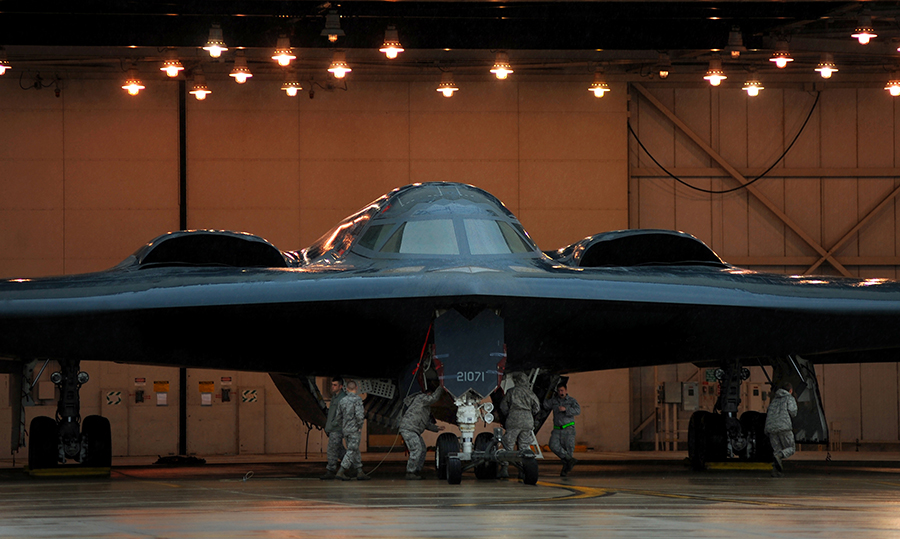 Since Russia’s 2014 invasion of Ukraine, U.S.-Russian relations have deteriorated dramatically. A Russian violation of the Intermediate-Range Nuclear Forces (INF) Treaty has put that treaty at risk and the nuclear arms reduction dialogue remains stalled. As a result, each side still can deploy a whopping 1,550 strategic nuclear warheads, as allowed by New START.
Since Russia’s 2014 invasion of Ukraine, U.S.-Russian relations have deteriorated dramatically. A Russian violation of the Intermediate-Range Nuclear Forces (INF) Treaty has put that treaty at risk and the nuclear arms reduction dialogue remains stalled. As a result, each side still can deploy a whopping 1,550 strategic nuclear warheads, as allowed by New START.





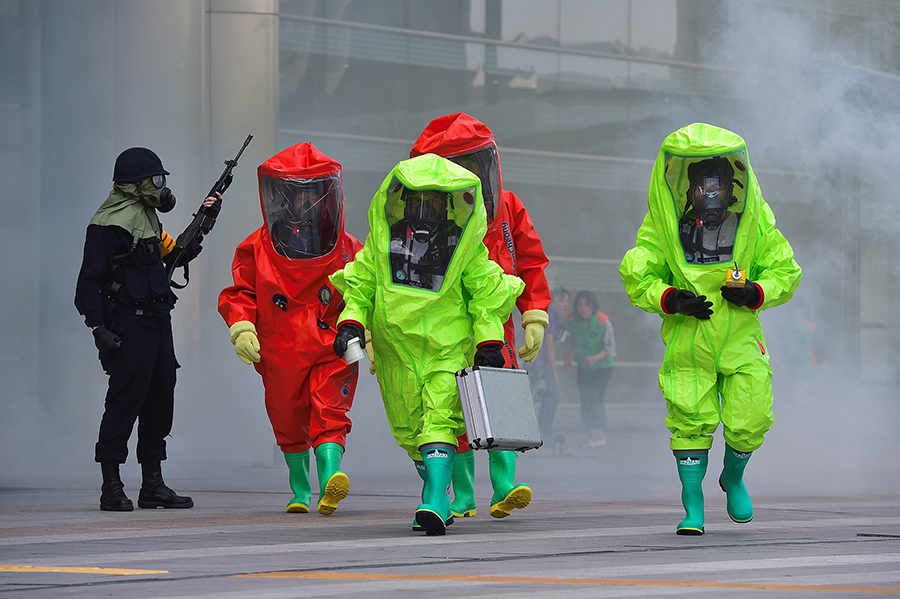 Expanding analysis to include a consideration of North Korea’s chemical weapons capabilities allows for a better understanding of the doctrine around its unconventional weapons and thus for development of more tailored policies to deal with the WMD threats and risks they pose.
Expanding analysis to include a consideration of North Korea’s chemical weapons capabilities allows for a better understanding of the doctrine around its unconventional weapons and thus for development of more tailored policies to deal with the WMD threats and risks they pose.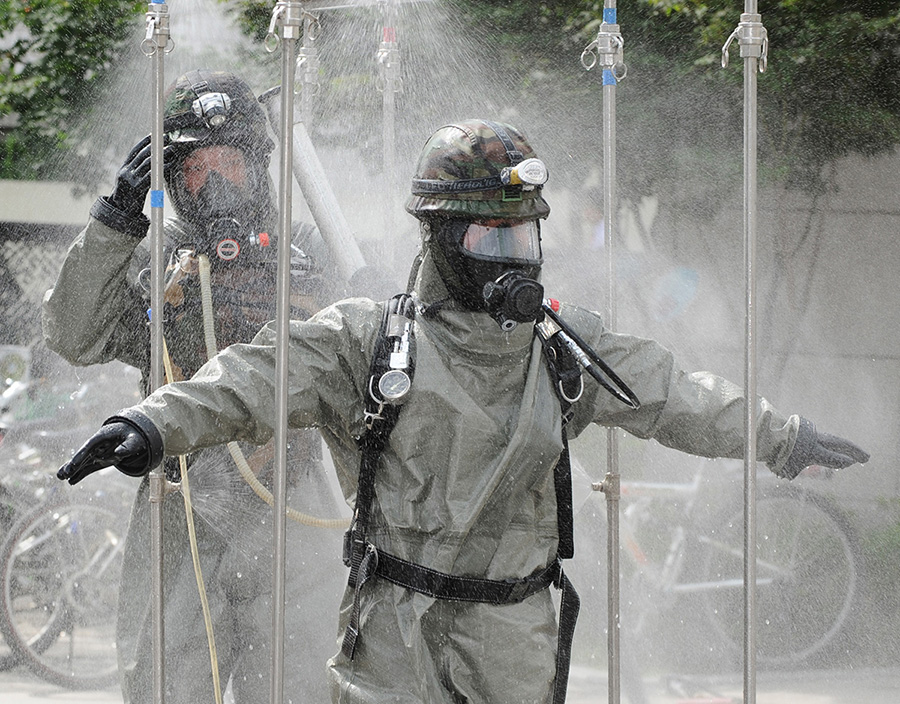 short term likely has declined. The same may be true of the long-term vision, although reunification remains imbedded in North Korea’s Constitution and the North Korean psyche. At the same time, given the economic and military buildup in South Korea and increased U.S. military presence in the region, the North’s worry about a potential territorial attack has increased, likely elevating deterrence for regime survival above reunification. This does not equate to a renunciation of reunification but does suggest a shift in strategic priorities, especially in the short to medium term, that prioritizes nuclear weapons.
short term likely has declined. The same may be true of the long-term vision, although reunification remains imbedded in North Korea’s Constitution and the North Korean psyche. At the same time, given the economic and military buildup in South Korea and increased U.S. military presence in the region, the North’s worry about a potential territorial attack has increased, likely elevating deterrence for regime survival above reunification. This does not equate to a renunciation of reunification but does suggest a shift in strategic priorities, especially in the short to medium term, that prioritizes nuclear weapons.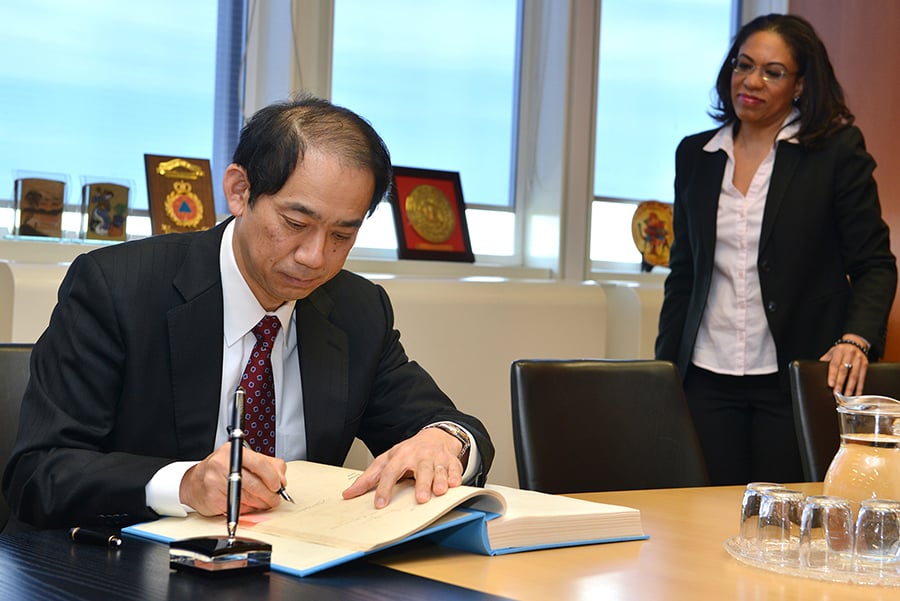 A case in point is the Treaty on the Prohibition of Nuclear Weapons, which was adopted in July last year with 122 states voting in favor, 1 opposed, and 1 abstention among those who gathered to negotiate this treaty.
A case in point is the Treaty on the Prohibition of Nuclear Weapons, which was adopted in July last year with 122 states voting in favor, 1 opposed, and 1 abstention among those who gathered to negotiate this treaty.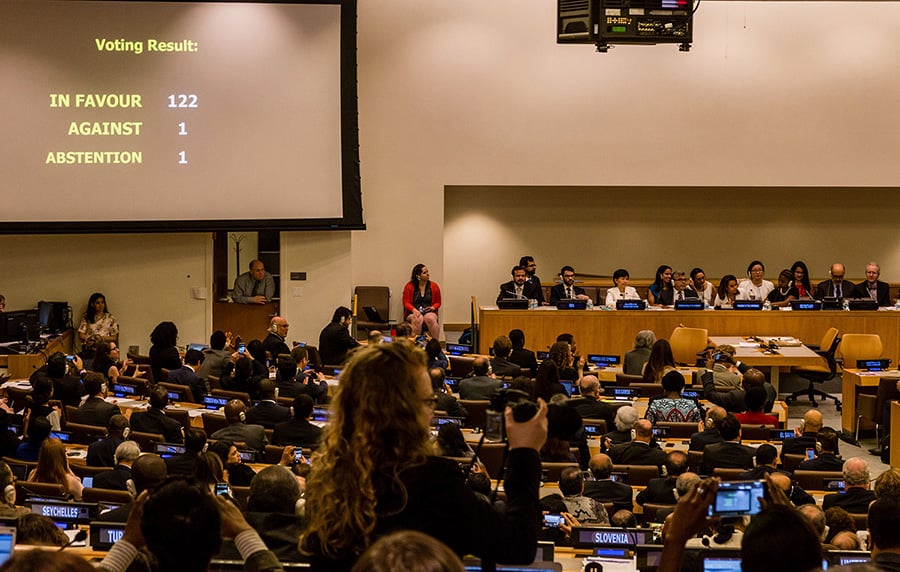 Under these circumstances, it is necessary to consider what measures may be possible even in an unfavorable security situation. Those who favor nuclear disarmament should be reminded that they are not operating in a closed system. Like it or not, the external environment comes into play. It is sometimes argued, from those who attach importance to the provisions and logic of the NPT, that a favorable security situation should not be a precondition for nuclear disarmament because Article VI of the NPT does not refer to a security situation.
Under these circumstances, it is necessary to consider what measures may be possible even in an unfavorable security situation. Those who favor nuclear disarmament should be reminded that they are not operating in a closed system. Like it or not, the external environment comes into play. It is sometimes argued, from those who attach importance to the provisions and logic of the NPT, that a favorable security situation should not be a precondition for nuclear disarmament because Article VI of the NPT does not refer to a security situation. One important yet underappreciated element has been to augment broad, international counterproliferation strategies with buy-in from regional organizations, such as the Caribbean Community (CARICOM), the Organization for Security and Co-operation in Europe (OSCE), and the African Union (AU). Tapping into the strengths and resources of regional organizations could bolster the implementation of global counterproliferation strategies. On this, more can and should be done.
One important yet underappreciated element has been to augment broad, international counterproliferation strategies with buy-in from regional organizations, such as the Caribbean Community (CARICOM), the Organization for Security and Co-operation in Europe (OSCE), and the African Union (AU). Tapping into the strengths and resources of regional organizations could bolster the implementation of global counterproliferation strategies. On this, more can and should be done. Resolution 1540 broke new ground in the global nonproliferation regime by its scope and legally binding nature. Enacted under the binding powers of UN Charter Chapter VII,
Resolution 1540 broke new ground in the global nonproliferation regime by its scope and legally binding nature. Enacted under the binding powers of UN Charter Chapter VII,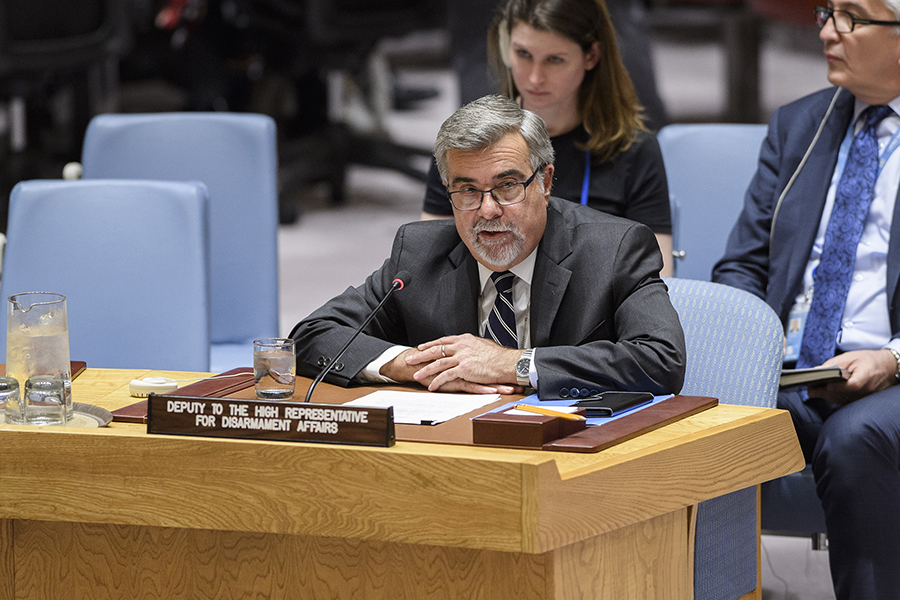 Much has been written on the reasons why South Africa joined the NPT in July 1991. Most acknowledge there were in fact a combination of factors.
Much has been written on the reasons why South Africa joined the NPT in July 1991. Most acknowledge there were in fact a combination of factors.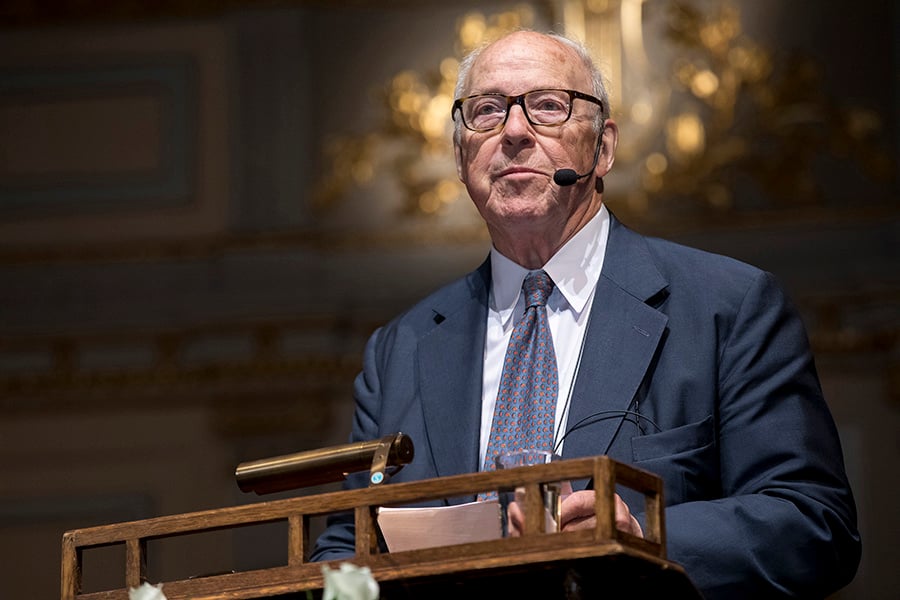 Yet, much of the world is currently engaged in arms races. Even heaven is not left in peace. Outer space is already “a war-fighting domain” filled with satellites, and many can be mobilized for war. Low-level cyberwar is already here. Nuclear weapons, “Star Wars,” and missile shields are again in focus.
Yet, much of the world is currently engaged in arms races. Even heaven is not left in peace. Outer space is already “a war-fighting domain” filled with satellites, and many can be mobilized for war. Low-level cyberwar is already here. Nuclear weapons, “Star Wars,” and missile shields are again in focus.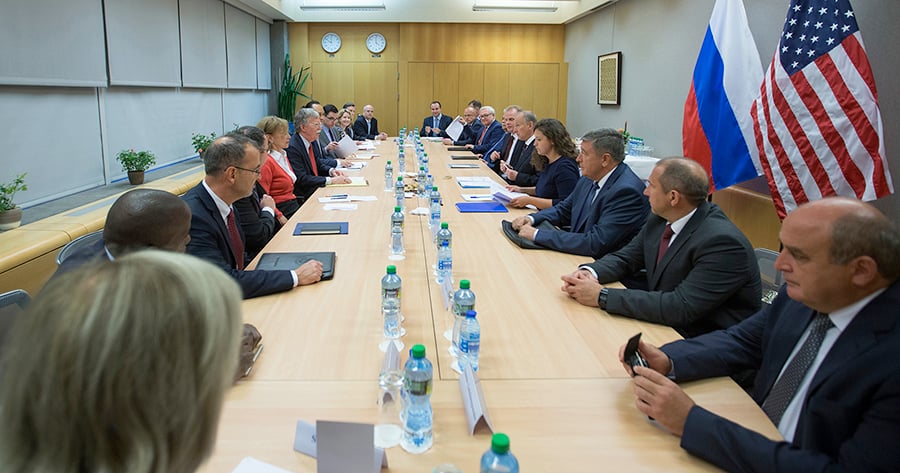 A follow-up meeting between White House national security adviser John Bolton and his Russian counterpart, Nikolai Patrushev, in Geneva on Aug. 23 also did not produce any arms control announcement, despite expectations that they might agree to resume bilateral strategic stability talks. Bolton told reporters afterward that the Trump administration has not decided how to proceed on key matters, including the possible extension of the 2010 New Strategic Arms Reduction Treaty (New START).
A follow-up meeting between White House national security adviser John Bolton and his Russian counterpart, Nikolai Patrushev, in Geneva on Aug. 23 also did not produce any arms control announcement, despite expectations that they might agree to resume bilateral strategic stability talks. Bolton told reporters afterward that the Trump administration has not decided how to proceed on key matters, including the possible extension of the 2010 New Strategic Arms Reduction Treaty (New START).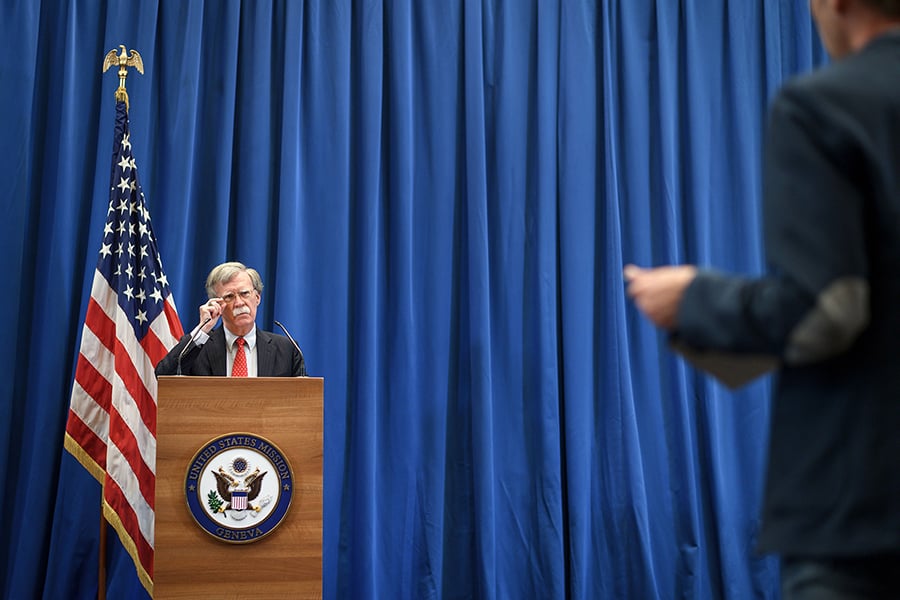 The United States and Russia held a first round of strategic stability talks last September in Helsinki. The specific agenda was not disclosed. (See
The United States and Russia held a first round of strategic stability talks last September in Helsinki. The specific agenda was not disclosed. (See  U.S. exports to Russia related to national security are banned under the initial sanctions, including gas turbine engines, electronics, integrated circuits, and testing and calibration equipment that were previously allowed on a case-by-case basis. Waivers may be issued for some exports related to space flights and commercial passenger safety.
U.S. exports to Russia related to national security are banned under the initial sanctions, including gas turbine engines, electronics, integrated circuits, and testing and calibration equipment that were previously allowed on a case-by-case basis. Waivers may be issued for some exports related to space flights and commercial passenger safety.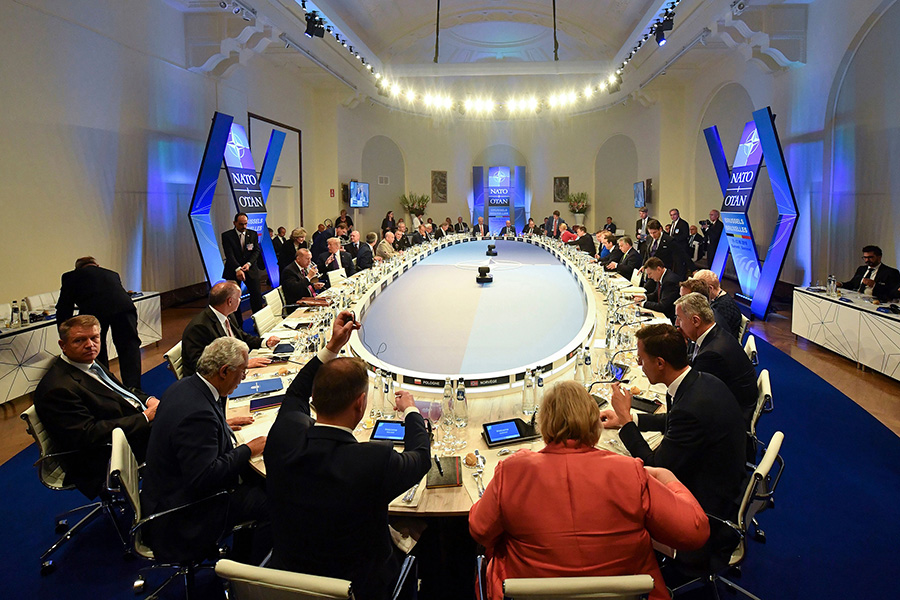 The 2018 Brussels summit declaration states that “NATO’s nuclear deterrence posture also relies on United States’ nuclear weapons forward-deployed in Europe,” a shift from the alliance’s 2016 Warsaw declaration stating that the posture relied “in part” on U.S. forward-deployed nuclear weapons. Neither the 2014 nor 2012 summit statements explicitly referred to the need for U.S. nuclear weapons in Europe. (See
The 2018 Brussels summit declaration states that “NATO’s nuclear deterrence posture also relies on United States’ nuclear weapons forward-deployed in Europe,” a shift from the alliance’s 2016 Warsaw declaration stating that the posture relied “in part” on U.S. forward-deployed nuclear weapons. Neither the 2014 nor 2012 summit statements explicitly referred to the need for U.S. nuclear weapons in Europe. (See 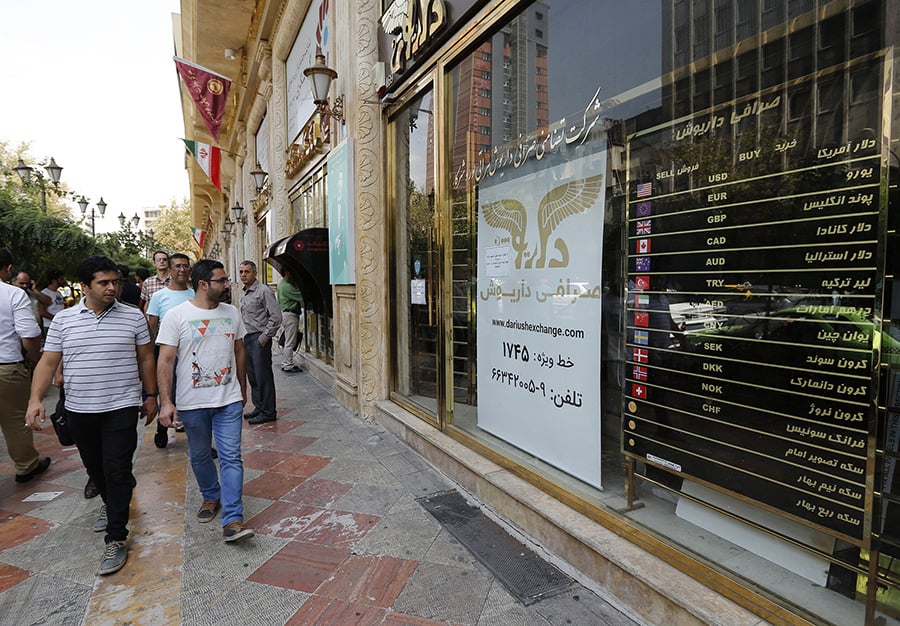 Although the sanctions were reimposed in May, when U.S. President Donald Trump pulled out of the multilateral nuclear accord known as the Joint Comprehensive Plan of Action, the United States allowed entities 90 or 180 days to wind down their activities in the Islamic republic before the U.S. restrictions would enter into full effect. (See
Although the sanctions were reimposed in May, when U.S. President Donald Trump pulled out of the multilateral nuclear accord known as the Joint Comprehensive Plan of Action, the United States allowed entities 90 or 180 days to wind down their activities in the Islamic republic before the U.S. restrictions would enter into full effect. (See